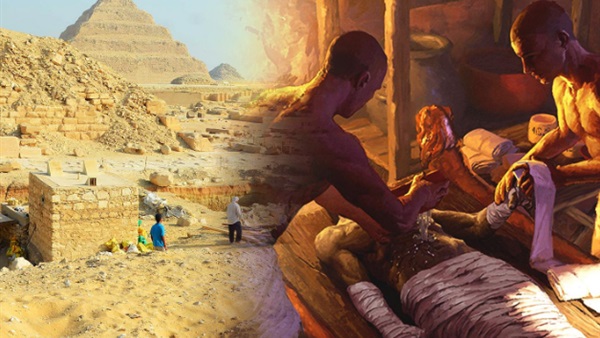Unlocking the Secrets of Ancient Egyptian Trade Networks through Mummies

Recently, researchers have uncovered new information about
the trade networks of ancient Egypt by studying the mummies that were produced
thousands of years ago. The study focuses on a workshop that was located near
the necropolis of Saqqara, a prominent burial ground in ancient Egypt. The
workshop was discovered in 2016 and, when it was excavated, researchers found
dozens of ceramic vessels containing the substances used in the mummification
process.
To the surprise of the researchers, many of the substances
used for mummification were not sourced from within Egypt. The analysis of the
contents of the pots showed that various substances were used for different
parts of the body, such as pistacia resin and castor oil for the head, and
other mixtures for washing and softening the skin. Some of these materials were
transported from great distances, such as the Mediterranean, the Levant, and
the Dead Sea. The study also found two previously unseen substances: dammar gum
and elemi resin.
Elemi resin appears to have come from equatorial or southern
Africa or from South or Southeast Asia. The trees that produced dammar grow
only in southern India, Sri Lanka, and tropical Southeast Asia. This discovery
suggests that the demand for these exotic resins was significant and may have
played an important role in the early development of global trade networks.
The ancient Egyptians mummified their dead for over 3,000
years, hoping to ensure that their souls would have a permanent resting place.
The process of mummification involved a series of rituals, including prayers,
incense burning, anointing, and wrapping of the body. This process was thought
to transform the deceased from an earthly being to a divine being.
Previously, researchers studying mummification methods had
limited information available to them, relying primarily on pictorial evidence
and references in Egyptian texts and accounts from Greek writers such as
Herodotus. However, the discovery of the workshop jars has provided new insight
into the mummification process. For example, the substance known as
"antiu" had long been thought to be myrrh or frankincense, but it was
actually a blend of cedar oil, juniper or cypress oil, and animal fats.
The findings of the study have helped to correct
misunderstandings about the mummification process and shed new light on the
trade networks of ancient Egypt. Dr. Susanne Beck, who is leading the
excavation, stated that "we have known the names of many of these
embalming ingredients since ancient Egyptian writings were deciphered. But
until now, we could only guess at what substances were behind each name."
The discovery of the workshop jars has provided a wealth of new information
that will be valuable to future researchers studying the history and culture of
ancient Egypt.







